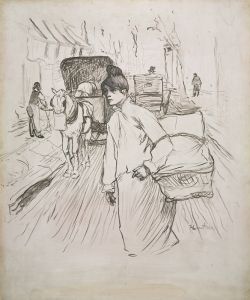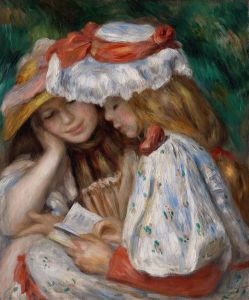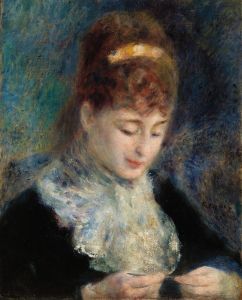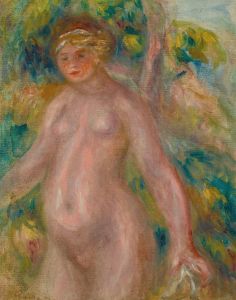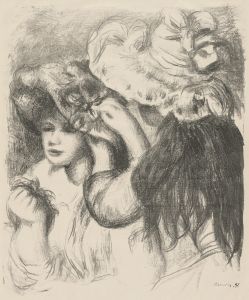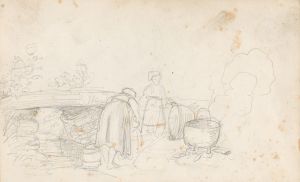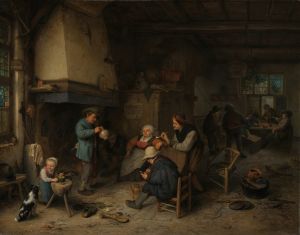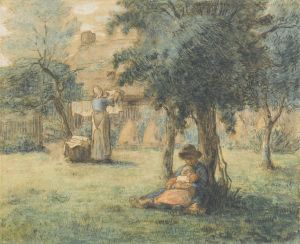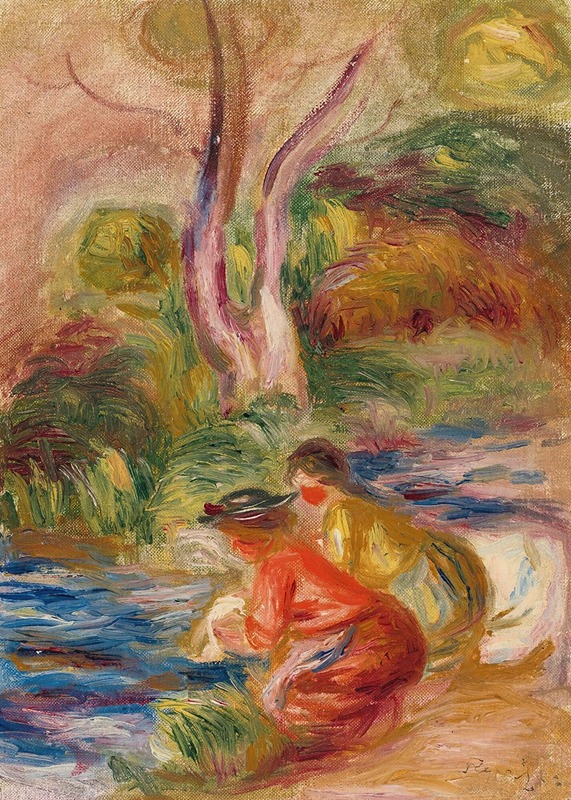
Les Laveuses
A hand-painted replica of Pierre-Auguste Renoir’s masterpiece Les Laveuses, meticulously crafted by professional artists to capture the true essence of the original. Each piece is created with museum-quality canvas and rare mineral pigments, carefully painted by experienced artists with delicate brushstrokes and rich, layered colors to perfectly recreate the texture of the original artwork. Unlike machine-printed reproductions, this hand-painted version brings the painting to life, infused with the artist’s emotions and skill in every stroke. Whether for personal collection or home decoration, it instantly elevates the artistic atmosphere of any space.
"Les Laveuses" (The Washerwomen) is a painting by the renowned French artist Pierre-Auguste Renoir, a leading figure in the Impressionist movement. Renoir, born in 1841, was known for his vibrant light and saturated color, often focusing on people in intimate and candid compositions. His works are celebrated for their depiction of the beauty of everyday life and the female form.
"Les Laveuses" was painted in 1912, during a period when Renoir's style had evolved from his earlier Impressionist works to a more classical approach. This painting is a testament to his mature style, characterized by a softer palette and a more structured composition. By this time, Renoir had developed arthritis, which affected his ability to paint, yet he continued to produce art with the help of assistants who would place the brush in his hand.
The painting depicts a serene scene of washerwomen at work by a riverbank, a common subject in Renoir's oeuvre, reflecting his interest in everyday activities and the natural environment. The composition is balanced, with the figures of the women harmoniously integrated into the landscape. Renoir's brushwork in "Les Laveuses" is fluid and expressive, capturing the movement of the water and the gentle sway of the women's figures as they engage in their task.
Renoir's use of color in "Les Laveuses" is particularly noteworthy. He employs a range of soft, muted tones that convey the tranquility of the scene. The light in the painting is diffused, creating a sense of warmth and calmness. This use of light and color is a hallmark of Renoir's later works, where he often sought to capture the effects of sunlight on the landscape and figures.
The subject matter of washerwomen was popular among artists of the 19th century, as it depicted a slice of rural life that was both picturesque and relatable. Renoir's interpretation of this theme is unique in its focus on the beauty and dignity of the women at work, rather than merely portraying them as part of the landscape. This approach reflects Renoir's broader artistic philosophy, which emphasized the importance of beauty and joy in art.
"Les Laveuses" is housed in the Musée d'Orsay in Paris, which holds one of the most comprehensive collections of Impressionist and Post-Impressionist masterpieces. The painting is a significant example of Renoir's later work and continues to be admired for its technical skill and emotive power.
Renoir's legacy as a master of Impressionism and his influence on subsequent generations of artists remain profound. "Les Laveuses" exemplifies his ability to transform a simple, everyday scene into a work of art that resonates with viewers through its beauty and humanity.






